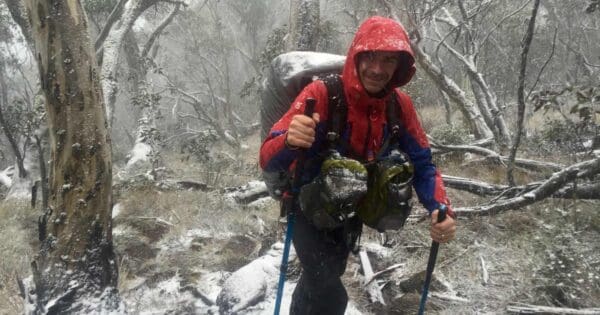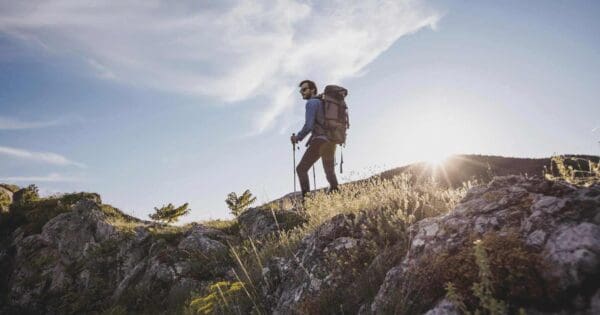Sun-scorched outback, lush rainforests teeming with life, and rugged coastlines kissed by turquoise waters – Australia’s landscapes offer a hiker’s paradise. But with scorching summers and unforgiving terrain, the same sun that bathes these trails in beauty can also pose a serious threat: heatstroke.
Heat kills more Australians than any other natural disaster
Extreme heat can affect anybody. Those more at-risk include people over the age of 65, babies and young children, pregnant women, people with acute or chronic health problems and people who are socially isolated. Heat can cause serious and potentially fatal health problems such as heat exhaustion and heatstroke, trigger sudden events like heart attack or stroke, or worsen existing medical conditions like kidney or lung disease. Take steps to protect yourself and others by avoiding hiking on extreme heat, keeping cool, staying hydrated, and planning ahead. Recognising early symptoms of heat-related health problems and taking action is crucial.

Heatstroke vs. Heat exhaustion: Know the difference
Understanding the distinction is crucial. Heat exhaustion, though uncomfortable, allows your body to manage temperature somewhat. You’ll experience heavy sweating, dizziness, and nausea. It’s a vital warning to cool down and rehydrate. However, heatstroke is an immediate life-threatening emergency. Your body’s cooling mechanisms shut down, causing a rapid rise in core temperature, organ damage, and even death. Be alert for dry, hot skin, no sweating, confusion, and a core temperature exceeding 40°C. Recognising these differences could save lives.
Symptoms of heatstroke
- Very high body temperature
- Red, hot, dry skin (no sweating)
- Dry swollen tongue
- Rapid pulse
- Dizziness
- Headache
- Nausea, vomiting
- Collapse
- Seizure
- Loss of consciousness
If heatstroke strikes: Act quickly
Heatstroke is a life-threatening emergency – if you can, call 000 and ask for an ambulance.
If you or someone you are with develops heatstroke:
- Call 000 and ask for an ambulance. If you cannot call for assistance and are carrying a Personal Locator Beacon (PLB), activate it.
- While waiting for emergency medical help, get the person to a cool shady area and lay them down.
- Remove excess clothing and wet their skin with water or wrap in wet cloths, fanning continuously. Apply cool, wet cloths to the neck, groin, and armpits. If possible, immerse them in cool (not icy!) water to accelerate heat dissipation.
- Give the person cool water to drink if conscious and able to swallow. Otherwise, do not give the person fluids to drink. Wait for medical professionals to arrive and provide care.
- Position an unconscious person on their side and ensure they are breathing normally. If needed, perform CPR
- Monitor their body temperature where possible and continue cooling efforts until the body temperature drops below 38 °C. Recommence cooling efforts if their temperature begins to rise again.
- Wait for the ambulance to urgently transport the person to hospital, where more intensive cooling and support can be given.
- Seek further instructions from Triple Zero, ambulance or hospital emergency staff, while waiting for the ambulance.
Disclaimer: The information provided in this section regarding first-aid for heatstroke is intended for informational purposes only and should not be construed as medical advice. In the event of a suspected heatstroke emergency, calling 000 for immediate medical assistance is always the recommended course of action.

Avoiding heatstroke: Prevention is key
- During extreme heat, cancel or reschedule non-essential outings.
- Plan your hike wisely: Beat the heat. Avoid hiking in hot weather if you can. If it’s not possible, make an early start. Opt for cooler times of day, such as early mornings or late afternoons. Choose shaded trails whenever possible, and aim for cooler months if you can.
- Hydrate, hydrate, hydrate: Carry plenty of water (at least 2-3 litres per person) and sip regularly, even if you don’t feel thirsty. Watch for signs of dehydration like feeling thirsty, lightheaded, having a dry mouth, tiredness, having dark-coloured, strong-smelling urine or passing less urine than usual.
- Electrolyte drinks can be helpful: During intense exercise, sweating causes loss of fluids and electrolytes. Electrolyte drinks can help replenish both. They can also be beneficial in cases of dehydration due to vomiting or diarrhea. Sugary drinks can worsen dehydration. Many commercially available electrolyte drinks are high in sugar. While sugar can provide a quick energy boost, excessive amounts can actually dehydrate you further. This is because your body uses fluids to process sugar. So, it’s important to choose wisely. Look for electrolyte drinks with lower sugar content, or consider natural sources of electrolytes like coconut water or milk.
- Dress for the heat: Choose loose, breathable clothing in light colours – they reflect heat better. Don’t forget a wide-brimmed hat and sunscreen – your essential sun protection gear.
- Listen to your body: Take regular rest breaks in the shade, adjust your pace to your energy levels, and don’t push yourself to exhaustion. Remember, turning back is a sign of intelligence, not weakness.
- Be sun smart: Sunscreen, sunglasses, and a wide-brimmed hat are your must-haves. Reapply sunscreen diligently, especially after sweating or swimming.
Heatstroke is preventable. By planning ahead, staying hydrated, and recognising the warning signs, you can transform your Aussie hiking adventure into an exhilarating experience, not a perilous one. So, embrace the Aussie sun responsibly, enjoy the trails with knowledge, and return home safely.
The best advice I can offer to avoid heatstroke is to make other plans if its too hot to hike. The trails will always be there, but you may not if you don’t take heatstroke seriously. Schedule activities for the coolest part of the day, or another day, and avoid being outdoors in the heat. During extreme heat, cancel or reschedule non-essential outings.





